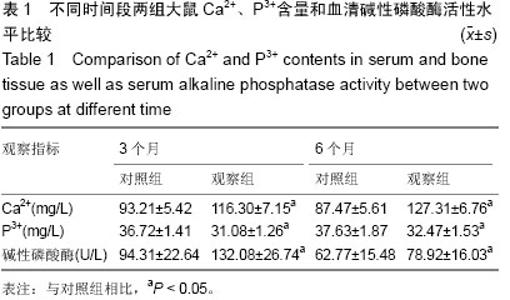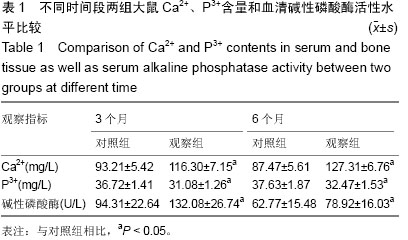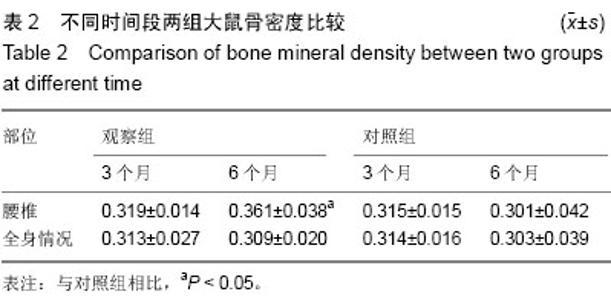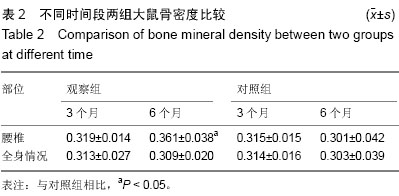| [1] 何勍,阮狄克,侯黎升,等.单纯减压与减压融合内固定术治疗伴Ⅰ度退行性滑脱的腰椎管狭窄症的疗效比较[J].中国脊柱脊髓杂志, 2012,22(5):412-417.
[2] 马超,吴继彬,赵猛,等.不同手术方法治疗老年退变性腰椎滑脱合并腰椎管狭窄症疗效的比较[J].中华医学杂志,2012,92(9): 620-623.
[3] 许勇,陈仙,李利平,等.经皮椎间孔镜治疗腰椎管狭窄症的体会[J].中国骨与关节损伤杂志,2013,28(7):651-652.
[4] Lin Q, Zhou X, Wang X, et al. A comparison of anterior cervical discectomy and corpectomy in patients with multilevel cervical spondylotic myelopathy.Eur Spine J.2012;(03): 474-481.
[5] 张骁青,贾力,陈振. 两种内固定方法治疗Schatzker Ⅵ型胫骨平台骨折的临床分析[J].中国医药导报,2012,9(3):48-49.
[6] 曾志华. 锁定钢板内固定治疗胫骨平台骨折的疗效分析[J].中外医学研究,2012,10(1):32-33.
[7] 李强,赵建民,张元智,等.腰椎退变黄韧带中炎性细胞因子的表达[J].中国脊柱脊髓杂志,2011,21(1):63-66.
[8] 阮狄克.脊柱外科医师需重视防范腰椎手术并发症[J].临床误诊误治,2015,28(1):31-33.
[9] 黄聪超. 复杂性胫骨平台骨折手术治疗的临床分析[J].中国社区医师:医学专业,2012,14(2):122-123.
[10] 谭占超.黄韧带肥厚机制研究进展[J].医学综述,2012,18(6): 896-898.
[11] Altinkaya N,Yildirim T,Demir S. Factors associated with the thickness of the ligamentum flavum:is ligamentum flavum thickening due to hypertrophy or buckling.Spine(Phila Pa 1976).2011;(16):E1093-E1097.
[12] Li M,Meng H,Du J,et al. Management of thoracic myelopathycaused by ossification of the posterior longitudinal ligament combinedwith ossification of the ligamentum flavum-a retrospectivestudy.Spine J.2012;12(12):1093-1102.
[13] 袁海峰,乔永东,王自立,等.骨化的胸椎黄韧带中骨形成蛋白的表达、CT值测定与骨化成熟度的研究[J].中华外科杂志, 2006, 11(8):1381-1384.
[14] 赵伟光,刘振武,刘利,等.胸椎黄韧带骨化症与骨形态发生蛋白4基因单核苷酸多态性的关联[J].中国组织工程研究, 2012, 16(24): 4376-4380.
[15] 金蔚涛.人骨形态发生蛋白受体IA基因单核苷酸多态性与脊柱后纵韧带骨化的遗传关联及其成骨作用机制研究[D].首都医科大学,2013.
[16] Liu FJ,Chai Y,Shen Y,et al.Posterior decompression with transforaminal interbody fusion for thoracic myelopathy due toossification of the posterior longitudinal ligament and the ligamentum flavum at the same level.J Clin Neurosci.2013;20(4):570-575.
[17] Wang LF, Liu FJ, Zhang YZ,et al.Clinical results and intramedullary signal changes of posterior decompression with transforaminal interbody fusion for thoracic myelopathy caused by combined ossification of the posterior longitudinal ligament and ligamentum flavum. Chin Med J (Engl).2013; 126(20):3822-3827.
[18] 冯法博,孙垂国,陈仲强.胸椎黄韧带骨化症临床特点及定位诊断进展[J].中华骨科杂志,2015,35(1):83-90.
[19] Schneider GM, Jull G, Thomas K, et al. Intrarater and interrater reliability of select clinical terts in patients referred for diagnosticfacet joint blocks in the cervical spine.Arch Phys Med Rehabil.2013;94,(8):1628-1634.
[20] Hyun SJ, Riew KD, Rhim SC.Range of motion loss after cervicallaminoplasty: a prospective study with minimum 5-year follow updata. Spine.2013;13 (4):384-390.
[21] 上官磊,樊星,罗卓荆.黄韧带退变病理特点及机制的研究进展[J].中国矫形外科杂志,2009,17(7):512-514.
[22] 孟祥宇,夏建龙,杨挺,等.椎间盘退变的机制及修复[J].中国组织工程研究,2015,19(11):1768-1773.
[23] 张永利,王琦,郭亚茹.地方性氟骨症的脊柱MRI表现[J].中华放射学杂志,2004,38(10):1051-1055.
[24] 李玉洁,谢敏.针刺夹脊穴配合重灸督脉治疗地方性氟骨病1例[J].医学信息,2014,27(23):645-645.
[25] Pain B,Telfeian AE.A retrospective evaluation of the clinical successof transforaminal endoscopic discectomy with foraminotomy in geriatricpatients.Pain physician. 2013;16(3): 225-229.
[26] Gabriele P,Gina M,Albert E.Transforaminal endoscopic discectomy with foraminoplasty for the treatment of spondylolisthesis.Pain Physician.2014;17(6):E703-E710.
[27] 聂志红,孔凡磊,赵素香,等.单侧椎弓根螺钉对侧关节突螺钉固定黄韧带保留治疗腰椎退变性疾病的临床疗效[J].河北医科大学学报,2014,35(9):1015-1017.
[28] 黄卫国,海涌.退行性腰椎滑脱症与峡部裂性腰椎滑脱症患者的手术疗效比较[J].中国骨与关节杂志,2014,3(6):460-465.
[29] 杨林,鹿洪辉.椎间孔镜技术与开放手术在治疗伴有骨质疏松的腰椎管狭窄症的疗效及安全性比较[J].中华老年多器官疾病杂志,2014,13(7):507-511.
[30] 杨勇,刘刚,苏义拉图.单纯减压和减压内固定治疗退行性腰椎管狭窄症术后近期效果的比较[J].中国医药导报,2015,12(15): 84-87.
[31] 袁海峰,王自立,丁惠强等.骨桥蛋白在胸椎黄韧带骨化中的定位表达及其病因学意义[C].第九届西部骨科论坛,银川,2013.
[32] 张益民,姜鑫,郭永智,等.腰椎间盘退变与炎症介质[J].实用骨科杂志,2008,14(9):534-535.
[33] 王晓平,马华松,陆明,等.腰椎间盘退变中的细胞因子及炎症递质:文献分析与临床应用[J].中国组织工程研究,2012,16(33): 6239- 6243.
[34] 梁春祥,魏富鑫,刘少喻,等.颈椎后路双开门术式治疗外伤性无骨折脱位型颈脊髓损伤的效果[C].第二十四届全国脊柱脊髓学术会议,长春,2012.
[35] 马治国,娄宏亮,黄鑫,等.前后路联合手术治疗无骨折脱位型颈脊髓损伤合并颈椎间盘突出临床疗效观察[J].中国骨与关节损伤杂志,2012,27(1):40-41.
[36] 王哲,张俊华,王全平,等.胸椎黄韧带骨化与腰椎黄韧带退变的组织病理与超微结构比较研究[J].第四军医大学学报, 2002, 23(2): 177-178.
[37] 侯志攀,唐桂阳,沈景寿,等.胸椎黄韧带骨化症手术的远期疗效及其影响因素分析[J].医学信息,2015,28(4):257-258.
[38] 毛兆光,范顺武,赵凤东,等.退行性腰椎滑脱黄韧带病理组织学和免疫组织化学的观察[J].中国骨伤杂志,2009,18(1):32-34.
[39] 吴方云.双醋瑞因对大白兔肥厚黄韧带作用机制的病理免疫组化研究[J].实用医药杂志,2015,(6):535-537.
[40] 俞海明,李毅中.炎症在腰椎间盘退变、突出、吸收发病机制中的作用[J].国际骨科学杂志,2006,27(4):248-150.
[41] 李解,黄国付.水通道蛋白在腰椎间盘退变过程中作用的研究进展[J].中国康复,2015,30(3):233-235.
[42] 尚琦松,黄擘,盛文辉,等.炎性因子TNF-α及IL-18与椎间盘退变的相关性研究[J].中国矫形外科杂志,2009,17(5):386-387.
[43] 孙灰灰,吴小涛.TNF-α与椎间盘退变关系的研究进展[J].东南大学学报:医学版,2015,40(3):448-452.
[44] 赵序列.椎间盘退变的病因研究[J].中国矫形外科杂志, 2002, 9(3):273-274.
[45] 康新桂,吴小涛.碱性成纤维生长因子在椎间盘退变中作用的研究进展[J].东南大学学报:医学版,2015,40(3):425-428. |





